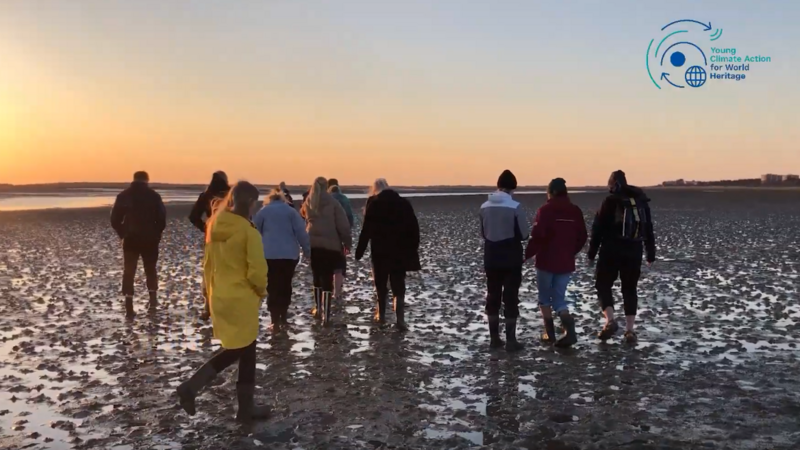High schoolers present their climate action projects for World Heritage

“Young Climate Action for World Heritage” is a youth project combining the topics UNESCO World Heritage and climate change with a focus on sustainable action. In the school year 2022-2023, in the Wadden Sea World Heritage Site, students from five UNESCO-associated and other schools from Denmark, Germany, and the Netherlands learned about the challenges climate change poses on the Wadden Sea and developed their own projects on the question: How can we take responsibility for the sustainable preservation of the World Heritage Site and for combating climate change locally? The results of the project as well as ideas from other participating World Heritage Sites were recently presented during a Youth Summit in Berlin.
A video introduces the outcomes of the Wadden Sea related schools:
“I was deeply impressed by the enthusiasm with which the students presented their ideas”, says Annika Bostelmann, Communications Officer of the Common Wadden Sea Secretariat and summit participant. “These young adults have put so much thought into their projects and dived into the topic of climate change that I am certain the project will leave a lasting impression on them.”
The project “Young Climate Action for World Heritage” is organised and implemented by the Institute Heritage Studies and the German Commission for UNESCO and funded by the German Federal Environmental Foundation (Deutsche Bundesstiftung Umwelt). Students from the UNESCO Associated Schools Network in Germany and its neighbouring countries and other schools have worked at six World Heritage Sites for one school year with the aim to design and implement their own projects on climate change and World Heritage. The Wadden Sea project group was supported by the Wadden Sea World Heritage and the International Wadden Sea School and received some expert advice from the trilateral network. The concrete project products were developed by the students themselves. The project ends in early 2024. Ways of continuing with the approach are currently being developed and discussed.
